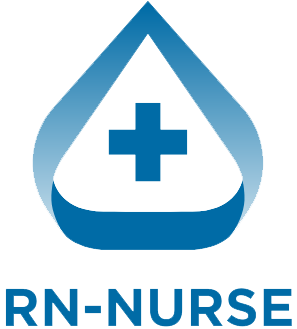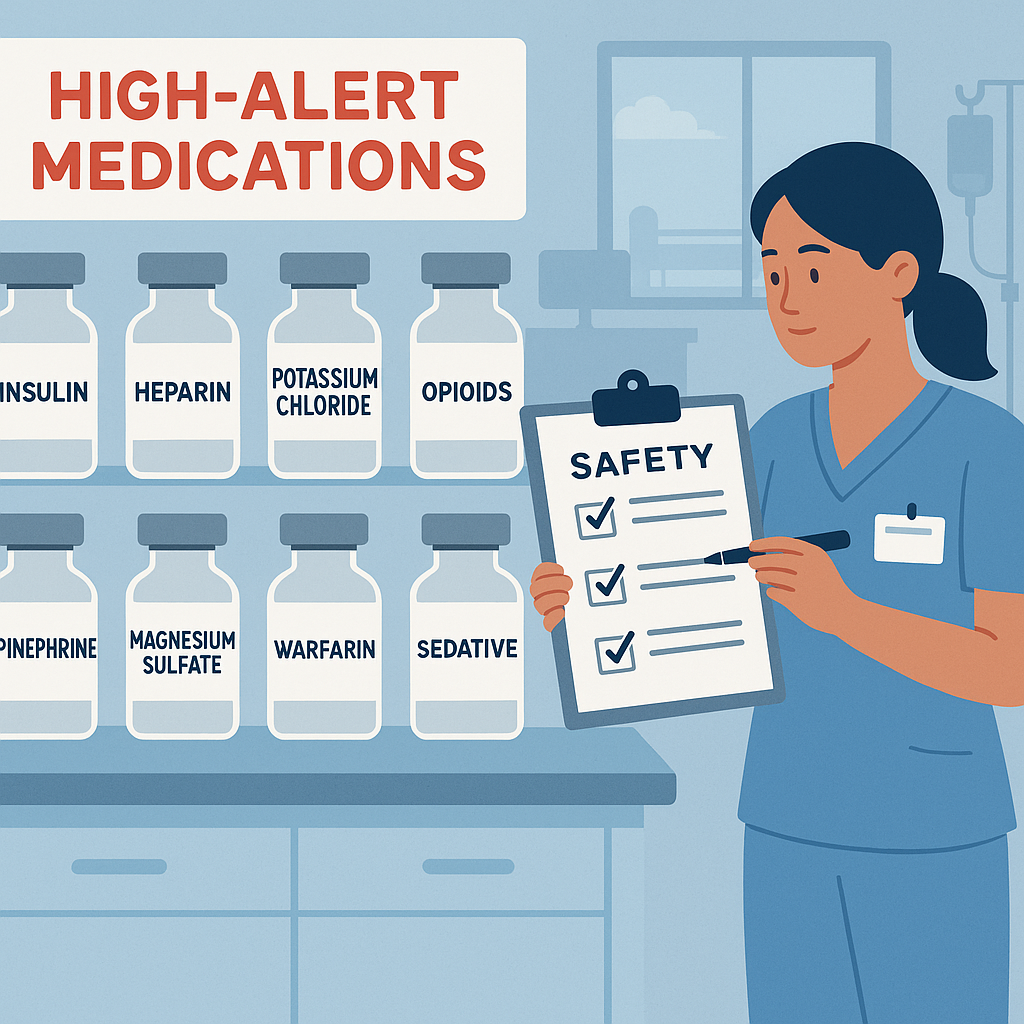In the world of nursing, patient safety is priority number one—especially when it comes to high-alert medications. These drugs carry a higher risk of causing serious harm or even death if used incorrectly. Whether you’re a registered nurse, an RN nurse, or preparing for the NCLEX, this list belongs in your nursing bundle.
Let’s break down the top 10 high-alert meds you’ll likely see in hospitals, along with what you need to monitor.
💉 1. Insulin
- Why it’s high-risk: Can cause severe hypoglycemia if overdosed or miscalculated.
- Nursing Tips:
- Always double-check the dose and type (regular vs. long-acting).
- Monitor blood glucose before and after administration.
- Watch for signs of hypoglycemia (sweating, confusion, tremors).
✅ NCLEX Alert: Know onset, peak, and duration of insulin types.
💉 2. Heparin (and other anticoagulants like Enoxaparin or Warfarin)
- Why it’s high-risk: Bleeding risk.
- Nursing Tips:
- Double-check IV dosing.
- Monitor aPTT, INR, and signs of bleeding (bruises, hematuria, tarry stools).
- Use infusion pumps for IV heparin.
💡 Nurses must always label heparin flushes correctly to avoid mix-ups.
💉 3. Potassium Chloride (IV)
- Why it’s high-risk: Rapid infusion can cause fatal arrhythmias.
- Nursing Tips:
- Never give IV push.
- Always dilute and administer slowly via IV pump.
- Monitor EKG, kidney function, and serum potassium.
⚠️ NCLEX tip: Watch for hyperkalemia symptoms—peaked T waves and muscle weakness.
💉 4. Opioids (e.g., Morphine, Fentanyl, Hydromorphone)
- Why it’s high-risk: Can cause respiratory depression.
- Nursing Tips:
- Assess pain, RR, BP, and LOC before and after giving.
- Have naloxone (Narcan) readily available.
- Educate patient about drowsiness and fall risks.
🔑 Nurses must document pain relief and safety interventions post-administration.
💉 5. Chemotherapy Agents
- Why it’s high-risk: Cytotoxic, carcinogenic, and immunosuppressive.
- Nursing Tips:
- Use PPE and special handling protocols.
- Monitor CBC and infection risk.
- Educate patient on side effects and safety at home.
👩⚕️ This is often managed by specially trained nurses, but all RN nurses should understand safety basics.
💉 6. Epinephrine
- Why it’s high-risk: A potent vasopressor with rapid cardiovascular effects.
- Nursing Tips:
- Used in code situations and anaphylaxis.
- Monitor HR, BP, and EKG closely.
- Know IM vs. IV dose differences.
🚨 NCLEX-ready nurses know epinephrine is the first-line drug for anaphylaxis.
💉 7. Neuromuscular Blockers (e.g., Succinylcholine, Vecuronium)
- Why it’s high-risk: Cause paralysis, including respiratory muscles.
- Nursing Tips:
- Administer only with sedation and ventilator support.
- Monitor airway and vitals continuously.
- Never leave a patient unmonitored.
🧠 A key NCLEX concept is to differentiate between sedation and paralysis.
💉 8. Sedatives (e.g., Midazolam, Propofol)
- Why it’s high-risk: Can cause profound sedation and respiratory arrest.
- Nursing Tips:
- Titrate slowly with continuous monitoring.
- Use in ICU or procedural settings with airway support nearby.
- Reassess LOC frequently.
📘 Add to your nursing bundle for critical care med-surg scenarios.
💉 9. Magnesium Sulfate
- Why it’s high-risk: Risk of toxicity in OB and ICU patients.
- Nursing Tips:
- Monitor DTRs, RR, and urine output.
- Used for preeclampsia and torsades de pointes.
- Keep calcium gluconate at bedside as antidote.
🍼 Essential for OB RN nurses and appears on NCLEX exams often.
💉 10. Digoxin
- Why it’s high-risk: Narrow therapeutic window.
- Nursing Tips:
- Check apical pulse for 1 minute before administering.
- Monitor for digoxin toxicity: nausea, visual changes, bradycardia.
- Monitor potassium—low levels increase toxicity risk.
🫀 A common NCLEX favorite in cardiac med questions.
✅ Summary Table: High-Alert Meds at a Glance
| Drug | Monitor | Risk |
|---|---|---|
| Insulin | Blood sugar | Hypoglycemia |
| Heparin | aPTT/INR | Bleeding |
| KCl IV | EKG/K+ | Arrhythmia |
| Opioids | RR/LOC | Respiratory Depression |
| Chemo | CBC/PPE | Cytotoxicity |
| Epinephrine | HR/BP | Hypertension |
| NMBAs | Airway | Paralysis |
| Sedatives | LOC/RR | Respiratory Arrest |
| Magnesium Sulfate | DTRs/RR | Toxicity |
| Digoxin | Apical pulse | Bradycardia, Toxicity |
📝 Final Thoughts for NCLEX and Nursing Practice
These high-alert medications are tested often on the NCLEX, and being prepared to handle them safely is a must for every nurse. Whether you’re a student, registered nurse, or preparing your own nursing bundle, review these regularly and always follow the 5 Rights of Medication Administration.

